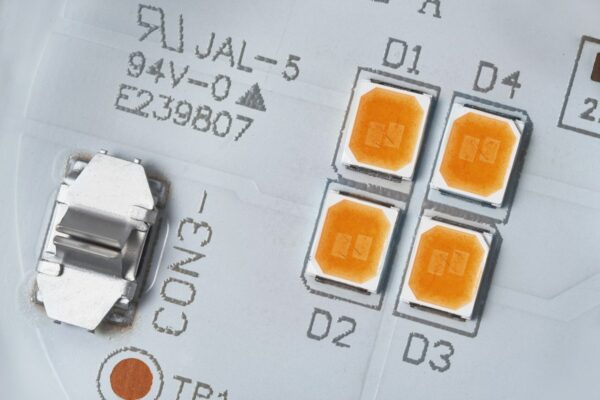What is Aluminum PCB
An Aluminum PCB, also known as an aluminum circuit board, is a type of printed circuit board (PCB) that differs from traditional PCBs by utilizing a metal substrate primarily made of aluminum, instead of the usual fiberglass or plastic substrate. The layout of an aluminum PCB is similar to that of other PCBs, with layers of copper, solder mask, and silkscreen applied over it.
The primary advantage of using an aluminum PCB lies in its excellent heat dissipation properties. This makes it particularly well-suited for applications involving LED (Light Emitting Diode) and power converting electronics. LEDs generate significant amounts of heat, and aluminum, being a highly efficient conductor of heat, helps to direct the heat away from the components. This not only extends the lifespan of the LED device but also enhances its overall stability.
Aluminum PCBs find widespread use in various lighting applications, such as street lights, stop lights, and household lighting, where heat dissipation and stability are crucial factors. They are also utilized in power converters to regulate electronics and change currents. While aluminum PCBs are typically single-sided, it is possible to manufacture double-sided versions, although the production of multilayer aluminum PCBs poses significant challenges.
Frequently Asked Questions
What Is the Most Commonly Used PCB Material
Copper is the most widely utilized material for PCBs. This is why the majority of PCBs are “copper clad.” All metals chosen for PCBs are compatible with surface mount technology (SMT) components. With SMT, the solder mask is applied to the metal traces, and the board is heated to solder the components securely in place.
What Makes a PCB Expensive
Printed circuit boards can vary in size and the number of layers they have. Typically, the cost of fabricating a PCB increases with the number of layers it has. This is due to the added complexity in the manufacturing process, which ultimately raises the overall cost.
What Heavy Metals Are in PCBs
Waste printed circuit boards (PCBs) contain various hazardous heavy metals, such as copper (Cu), tin (Sn), lead (Pb), as well as other metals like zinc (Zn), nickel (Ni), iron (Fe), bromine (Br), manganese (Mn), and magnesium (Mg).
How Many Types of PCB Are There
Different Types of PCB include Single Sided PCB or Single Layer PCB, Double Sided PCB or Double Layer PCB, Multilayer PCB, and Rigid PCB.





